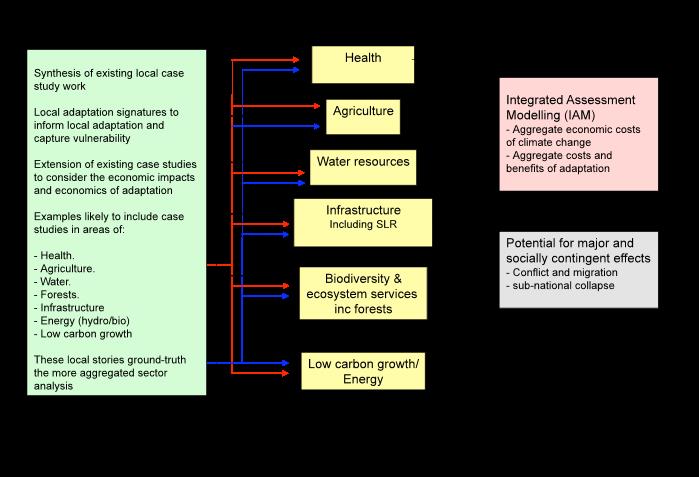|
Climate Change and Copenhagen: What If Global Temperatures Rose by 4 Degrees Celsius?
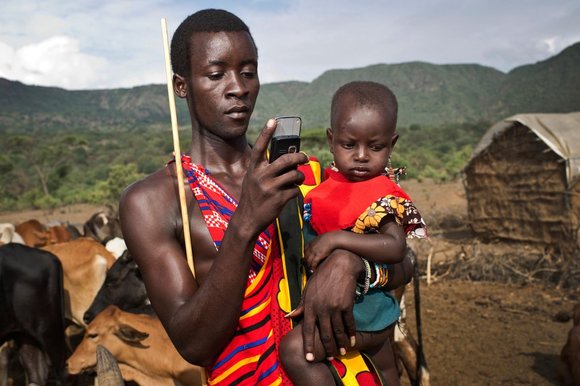
Climate - Met Office
www.metoffice.gov.uk/climate-change
Climate Change is a global issue and the Met Office Hadley Centre is leading international research into what could happen under climate change, and the ...
Learning - Climate guide - Observations, projections and ... - Climate change news
Met Office Hadley Centre Climate Programme
The Met Office Hadley Centre Climate Programme delivers world-leading scientific evidence on climate variability and change to meet the needs of UK Government.
· Share:
·
· Share this page on Facebook
· Share this page on Twitter
· Share by email
· Print
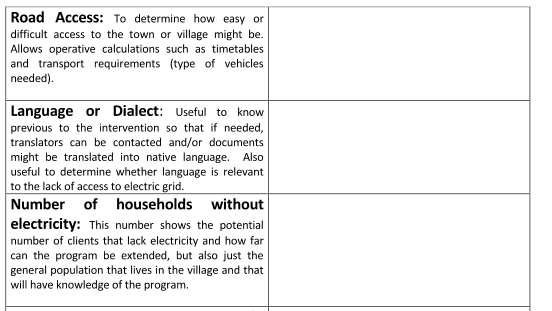

Four degree interactive map - Met Office
www.metoffice.gov.uk/climate-change/guide/impacts/high-end/map
29 Jun 2011 - Interactive map showing some of the impacts that may occur if the global ...
For the population rise at 2080, without climate change, just.
Related articles
· Climate Service UK
· Met Office Hadley Centre
· Climate science
· Our scientists
Related links
· DECC
· Defra
The Programme enables the Met Office to play a leading role in the UK's national climate capability and ensures that we have the information needed to navigate the risks and opportunities presented by changes in the climate.
The achievements of the current three-year plan, that begun in 2012, already include an Arctic sea-ice cover assessment, studies of climate change and extreme seasons around the world, new information about climate change and the decline of tropical forests, and improved methods for projections of European climate with higher resolution.
The Met Office Hadley Centre Climate Programme's ongoing scientific research work includes:
· Causes of recent trends in warming;
· Resilience of key systems - such as the Arctic and Amazon - to changes in climate;
· Developing a world-leading Earth system model to include and improve important processes such as the nitrogen cycle, glacier melt and permafrost;
· Understanding how human activity is impacting the risk of extreme weather, including a near real-time assessment of events;
· Providing long-term datasets and climate models to support decision-making on renewable energy deployment - from wind to wave, now and in the future.
The Met Office Hadley Centre Climate Programme is supported by the Department of Energy and Climate Change (DECC), and the Department for Environment, Food and Rural Affairs (Defra). Their £50m investment provides the core science on which Government can make decisions to help the UK become resilient to climate variability and change, benefit from opportunities for growth, and engage in international climate negotiations. For example, research findings from the programme help ensure cost-effective deployment of renewable energy, and a resilient future for the nation's infrastructure.
World-leading science
"Over the coming decades it is vital that we understand what risks and opportunities climate change may bring. The Met Office Hadley Centre is central to the UK's national climate capability. My department has committed to supporting its Climate Programme, which underpins policy at home and on the international stage and is increasingly useful across Government."
Gregory Barker MP, Minister of State for Climate Change, DECC
"The world-class research of the Met Office Hadley Centre has established the UK as a real authority in understanding the challenges of climate change.
This research programme will ensure the Hadley Centre continues to provide us with the cutting edge evidence we need as we develop plans to prepare the UK for a changing climate. "
Lord Taylor of Holbeach, (Parliamentary Under-Secretary, Defra, 2011-2012)
Based in Exeter, the Met Office Hadley Centre delivers policy-focused research results by collating and managing global observations, developing computer models of the Earth's climate system, and analysing climate patterns. Science teams conduct this research with the benefit of access to the Met Office's supercomputer facilities and weather modelling capabilities. To produce the highest quality science, contribute most effectively to the national climate capability and extend the range of policy-relevant research it can conduct, the scientists work in partnership with UK, EU and other international institutions.
Policy-focused research
"The national climate capability has created a solid base for a more strategic and coordinated approach to procuring evidence across government. My job is to help ensure that the Climate Programme improves communication and interpretation of evidence and advice to government departments and agencies. A key part of this is working with partners to ensure that we take opportunities to make the most of the Government's investment in climate science; and that we use this world-leading capability to provide the support needed to enable society to thrive and prosper in a changing climate."
Dr Kirstine Dale, Head of Climate Programmes for Government, Met Office
World leaders will soon gather in Copenhagen in the hopes of coming up with a binding agreement aimed at limiting global warming to 2 degrees Celsius. But what if we're not successful? Kirsty Lewis of the Met Office Hadley Centre, a leading climate research group, introduces a new Flash map which shows what might happen should temperatures rise by 4 degrees Celsius.
The impacts of climate change will be widespread across the globe. Emissions of greenhouse gases have already altered the earth's atmosphere and the climate is already changing. We will live with the consequences of these changes for the next few decades, regardless of the actions we take now to reduce our emissions. However, beyond that time, future climate change depends on whether we continue to emit greenhouse gases into the atmosphere at the rate we currently do, or whether we take effective steps to dramatically reduce our emissions.
ANZEIGE
The difference between these two courses of action is the difference between some inevitable climate change, and more severe, "high-end" climate change in the longer term. This is a decision that faces politicians at the global climate change negotiations at Copenhagen in December.
In order to understand more about what the human impact of high-end climate change might be, and therefore what would happen if a successful agreement can not be reached at Copenhagen, the United Kingdom's Met Office Hadley Centre has produced a map outlining some of the impacts that may occur if the global average temperature rises by 4 degrees Celsius (7 degrees Fahrenheit) above the pre-industrial climate average.
The Latest Research
The map was produced by the Met Office Hadley Centre, but contains contributions from climate scientists from other institutions conducting the latest research on climate impacts.
Although the average temperature rise over the globe is 4 degrees Celsius (7 degrees Fahrenheit) the projection on the map shows that this average rise will not be spread uniformly across the globe. The land will heat up more quickly than the sea, and high latitudes, particularly the Arctic, will have larger temperature increases. The average land temperature will be 5.5 degrees Celsius above pre-industrial levels.
The impacts on human activity shown on the map are only a selection of those that may occur, and highlight the severe effects on water availability, agricultural productivity, extreme temperatures and drought, the risk of forest fire and sea level rise.
Frightening Impacts
Agricultural yields are expected to decrease for all major cereal crops in all major regions of production. The availability of water will be affected by melting of glaciers, particularly in areas such as the Indus basin and western China, where much of the river flow comes from melt water. Population increases, combined with changes in river run off as a result of changes in rainfall patterns and increased temperatures, could mean that by 2080 significantly less water is available to approximately 1 billion people already living under water stress. For many areas of the world sea level rise, combined with the effect of storms, will threaten low lying coastal communities. There are often very dense populations living along coasts, as well as important infrastructure and high value agricultural land, which makes the impact of coastal flooding particularly severe. The intrusion of salt water on farming land, and the risk to lives of flooding events could affect millions of people worldwide every year.
The impacts are frightening, and the list is not exhaustive. However, the map represents a world where climate change has gone unmitigated, where we have continued to emit greenhouse gases at the rates we are today. If we continue to do this, then the likelihood of the planet warming by 4 degrees Celsius (7 degrees Fahrenheit) increases, and as it does so the risk of these impacts being realised also increases. By taking strong and effective action to curb greenhouse gases emissions, it may be possible to limit this temperature rise to 2 debrees Celsius (4 degrees Fahrenheit). Although this would still bring some adverse impacts, the risk of the very severest impacts, as shown in the Met Office Hadley Centre map, is significantly reduced.
By Kirsty Lewis, Principal Climate Change Consultant for the Met Office Hadley Centre, the UK's principal climate research institute and a global leader in climate change science.
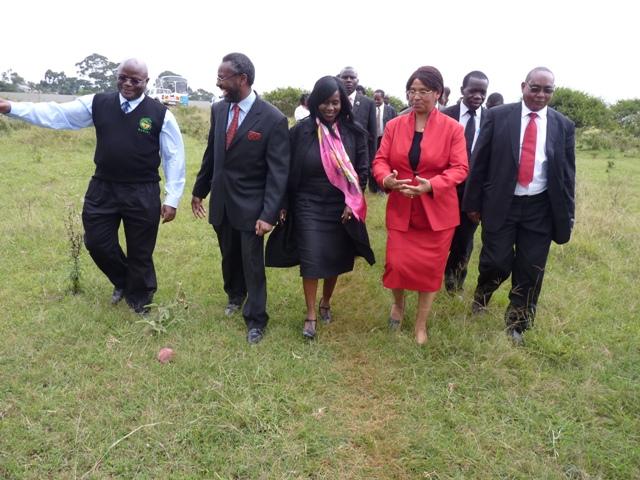
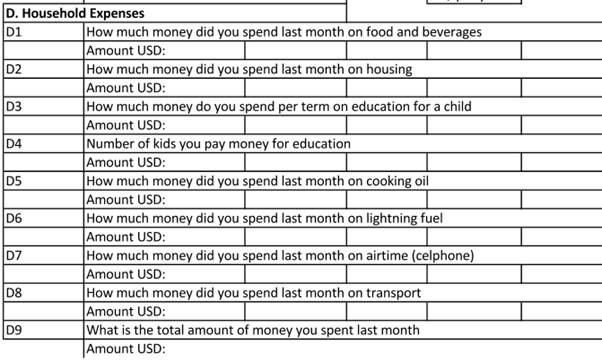

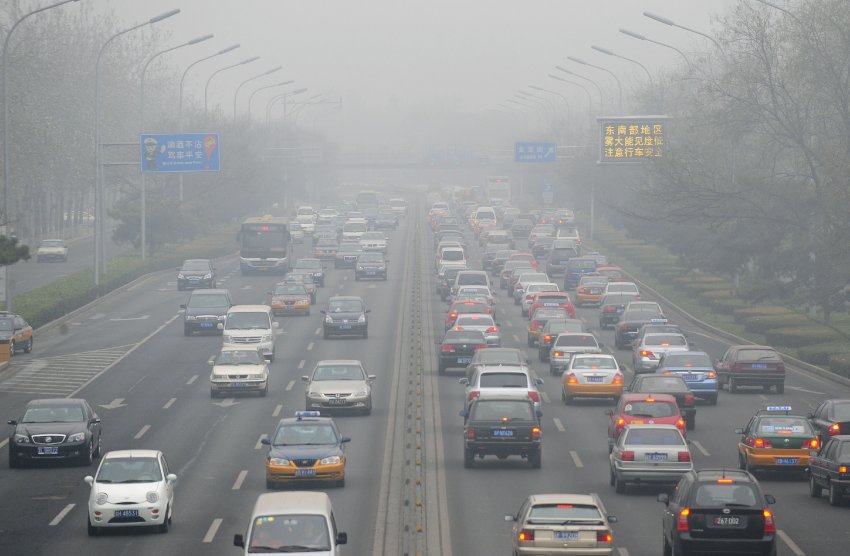

What about Climate Refugees? Efforts to Help the Displaced Bog Down in Copenhagen
By Christopher Lawton
Negotiators in Copenhagen are working feverishly to come up with a deal to combat future climate change. But global warming is already here, and beginning to drive some people from their homes. Efforts to find a way to help such "climate refugees" are going nowhere fast.
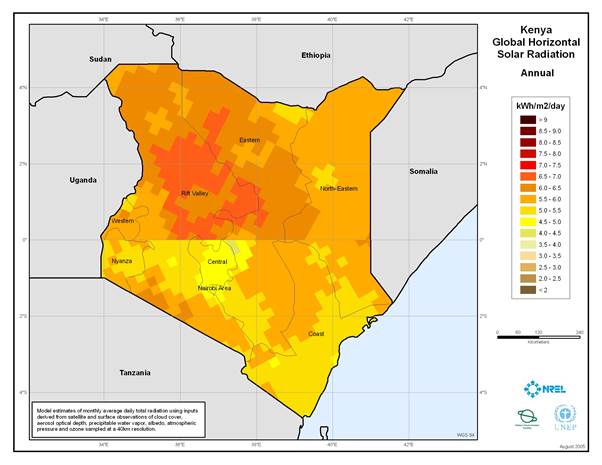
AP
The effect of 4-degree climate change
By Channel 4 News
Updated on 22 October 2009
In the build-up to the Copenhagen Climate Change summit, the government has produced a poster showing how the world will be changed by a global temperature increase of 4 degrees Celsius.
The government's current policies are aimed at limiting the increase in temperatures worldwide to 2 degrees Celsius.
The poster shows that a 4 degree average rise will not be spread uniformly across the globe. The land will heat up more quickly than the sea, and high latitudes, particularly the Arctic, will have larger temperature increases.
The average land temperature will be 5.5 degrees above pre-industrial levels.
The impacts on human activity shown on the map are only a selection of those that may occur, and highlight the severe effects on water availability, agricultural productivity, extreme temperatures and drought, the risk of forest fire and sea level rise.

Click here to launch a full-screen interactive version of the map
Agricultural yields are expected to decrease for all major cereal crops in all major regions of production. Half of all Himalayan glaciers will be significantly reduced by 2050, leading to 23 per cent of the population of China being deprived of the vital dry season glacial melt water source.
The Foreign Secretary David Miliband said: "We cannot cope with a 4 degree world. This map clearly illustrates the scale of the challenge facing us today. Climate change is a truly global problem that needs a global solution and it is a solution we have within our grasp. But to tackle the problem of climate change, all of us - foreign ministries, environment ministries, treasuries, departments of defence and all parts of government and societies - must work together to keep global temperatures to 2 degrees. It is only by doing this that we can minimise the huge security risks presented by a future 4 degree world."
Ed Miliband, Energy and Climate Change secretary said: "This map shows that the stakes couldn't be any higher at the Copenhagen talks in December. Britain's scientists have helped to illustrate the catastrophic effects that will result if the world fails to limit the global temperature rise to 2 degrees. With less than 50 days left before agreement must be reached, the UK's going all out to persuade the world of the need to raise its ambitions so we get a deal that protects us from a 4 degree world."
Vicky Pope, Head of Climate Change Advice at the Met Office says: "If emissions continue at the current rate the global average temperature are likely to rise by 4 degrees Celsius by the end of this century or even substantially earlier. The science tells us that this will have severe and widespread impacts in all parts of the world, so we need to take action now to reduce emissions to avoid water and food shortages in the future."
Professor Chris Rapley CBE, director of the Science Museum and Professor of Climate Science at University College London said: "The map provides graphic evidence of the dramatic transformation of our world that a 4 degree global temperature rise would trigger. It leaves no doubt of the paramount importance of a successful outcome of the Copenhagen negotiations."
Rabeya Khatoon, right, and Moriom Bibi, lost their homes to cyclone Aila and are now working at a Dhaka brick factory.
In Copenhagen, world leaders, lobbyists and environmental activists have been squabbling over curbing CO2 emissions and providing billions of dollars to developing nations to help combat global warming.
ANZEIGE
But a smaller group is fighting for something which would seem to be much simpler: a mere mention.
The reference, which advocacy groups hope to have included in any final paper to come out of Copenhagen, has to do with those forced to leave their homes due to the effects of climate change. Several groups, including the Office of the United Nations High Commissioner for Refugees, the United Nations University and the Norwegian Refugee Council, have formulated a passage that would require all Copenhagen signatories to undertake "activities related to internal and cross-border migration and displacement or planned relocation of persons affected by climate change."
In other words, refugee advocates want to bring the existence of those displaced by climate change to the forefront.
Unable to Return
The reference goes on to say that nations should be "enhancing and identifying modalities of interstate cooperation to respond to the needs of affected populations who either cross an international frontier as a result of, or find themselves abroad and are unable to return owning to, the effects of climate change."
"It's hard to get attention for this," Vikram Kolmannskog, climate advisor for the Norwegian Refugee Council, an international humanitarian organisation working with displaced persons, told SPIEGEL ONLINE. "There is very little awareness of the fact that climate change is already happening. While we try to prevent further climate change, we also have to adapt to a climate that has already changed."
While small, the paragraph-long mention of climate-caused migration would bring much needed global attention to a phenomenon already underway in parts of Bangladesh. Low lying island nations in the South Pacific may also soon be at risk.
An official reference at Copenhagen could also be a springboard to both support for the displaced and funding for research. While currently the problem is manageable, many warn that it could spiral out of control before long.
More Research
But not all are interested in giving the problem a platform at Copenhagen, says Dr. Koko Warner, head of the Environmental Migration, Social Vulnerability, and Adaptation section at the United Nations University Institute for Environment and Human Security. She told SPIEGEL ONLINE that many have sought to alter the passage and Australia has attempted to water it down and has requested more research.
There is no denying that the issue is a complex one. Even the term "climate refugees," which is often used in connection with those displaced, is misleading. The definition of refugees, as outlined by the United Nations Convention Relating to the Status of Refugees, adopted in 1951, pertains merely to those fearing persecution back home.
Many have argued in favor of simply adding climate change to the definition. But Jean-Francois Durieux, a senior official at the the UNHCR, told SPIEGEL ONLINE that such people "are dreaming." The original negotiations took decades, he points out, and says that reopening those talks could undermine the current international system in place to help refugees.
"Let's not change the convention that we have, because it suits a purpose. Here we have a new scenario," Durieux told SPIEGEL ONLINE, referring to those displaced by climate change. "Maybe we need a new type of agreement."
Who Are the Environmentally Displaced?
Even without a proper name, identifying people who have been uprooted from their homes due to global warming is a challenge. While it's clear that those escaping sudden natural disasters such as floods and typhoons qualify as environmentally displaced, it is more difficult in cases involving the slower effects of climate change, such as drought and desertification.
That explains why the estimates for the total number of those displaced by climate vary widely. According to the Institute for Environment and Human Security, the number could be as high as 50 million by 2010. The Intergovernmental Panel on Climate Change says 150 million people may be displaced by climate change by 2050. The Stern Review of the Economics of Climate Change says that number will hit 200 million by 2050.
Perhaps the hardest question to answer isn't what to call or how to count people affected by climate change, but what to do for them. Currently, the large majority of people who leave their homes because of the changing climate stay within the borders of their home country. Those people, often referred to as internally displaced people, are generally protected by the state under the 1998 UN Guiding Principles on Internal Displacement. While not legally binding, there is a consensus among states that they are responsible for the well being of internally displaced people under the principles.
The largest legal gap exists when environmentally-displaced migrants cross national borders. Since these migrants are not considered refugees by the 1951 definition, they have no legal protection. At the same time, it is unclear which international organizations should take the lead on the cause. The NCR says that it wants the UNHCR to take a leading role, even if they are not technically refugees, because of their expertise on the legal and relief side. The UNHCR says it would partner with others to play a role in handling the issue.
'The Overall Process Is Very Opaque'
What is most needed, advocates say, is more international cooperation on the issue. To be sure, a small number of countries, including the United States, Sweden and Finland, offer temporary protection to those escaping sudden natural disasters. Denmark extended protection to some who left Afghanistan between 2001 and 2006 because of a drought there.
But advocates say these are more exceptions than the rule. They argue the issue needs to be addressed on the international stage.
"Addressing the challenge of climate change cannot be separated from the struggle to promote effective forms of development cooperation and to secure human rights for all," António Guterres, UN High Commissioner for Refugees, wrote recently in an op-ed piece for the International Herald Tribune.
For the moment, of course, the problem of "climate refugees" is taking a back seat in Copenhagen, particularly with doubt growing as to whether any kind of agreement can be reached at all.
"Right now the overall process is very opaque," says Warner. "We just don't want this whole process to collapse."
|



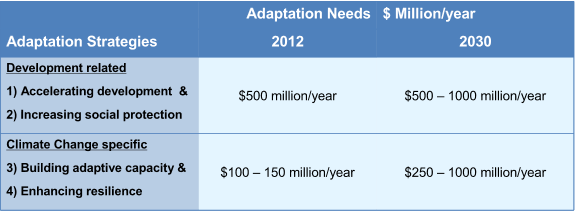
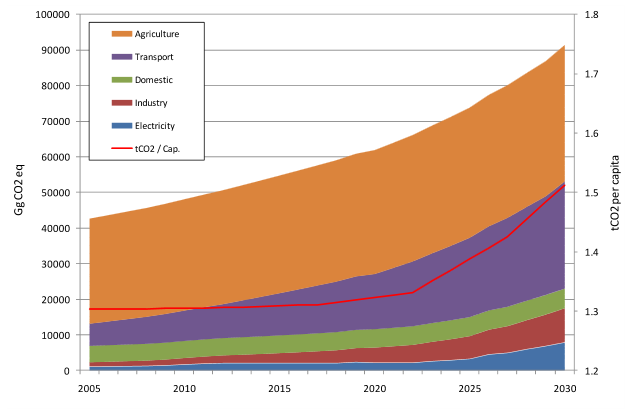
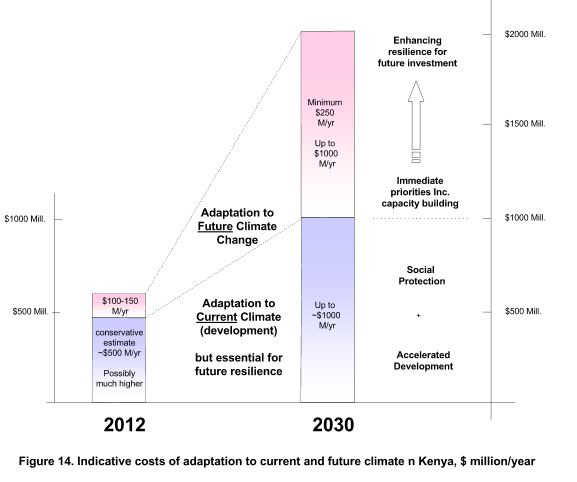
![4e8c1fb5eed3b4e26ca54e30e9kenya[1] 4e8c1fb5eed3b4e26ca54e30e9kenya[1]](../assets/images/autogen/a_4e8c1fb5eed3b4e26ca54e30e9kenya_1__3.png)
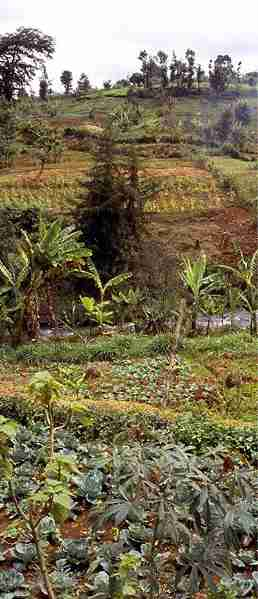
![kenyamangrove_353092[1] kenyamangrove_353092[1]](../assets/images/kenyamangrove_353092_1_.jpg)
